You are viewing the archived version of the site.
Go to modelshipwrights.com for the current dynamic site!
Go to modelshipwrights.com for the current dynamic site!
General Ship Modeling: Super-detailing
Topics on photo-etch, metal-parts, and all types of additional detailing.
Topics on photo-etch, metal-parts, and all types of additional detailing.
Hosted by Jim Starkweather
1/350 buoys - is PE fine?
Tracklink75

Joined: January 16, 2011
KitMaker: 14 posts
Model Shipwrights: 12 posts
Posted: Tuesday, September 19, 2017 - 12:47 AM UTC
I'm searching for buoys to dress up my 1/350 Bismarck but all I find are PE painted buoys. Are these okay for 1/350? Are there better options?
Posted: Tuesday, September 19, 2017 - 02:55 AM UTC
I assume you are talking Life Buoys? North Star Models sells a set of resin Life Buoys in 1/350, but you will have to paint them yourself.

Harry_at_BFM
Vendor

Joined: February 04, 2007
KitMaker: 594 posts
Model Shipwrights: 556 posts

Posted: Tuesday, September 19, 2017 - 03:06 AM UTC
I have North Star's Life buoys
40 for $8.50................
I have not done the review yet............
IMHO, I would just cut some Evergreen tubing.
40 for $8.50................
I have not done the review yet............
IMHO, I would just cut some Evergreen tubing.
Tracklink75

Joined: January 16, 2011
KitMaker: 14 posts
Model Shipwrights: 12 posts
Posted: Tuesday, September 19, 2017 - 05:04 AM UTC
I saw the North Star ones. Are they worth it? Quality-wise?
Posted: Tuesday, September 19, 2017 - 05:33 AM UTC
I like them as they give you a nice depth appearance where the PE ones are flat. But at 1/350 it may not make a difference. They are tiny and a whole lot of fun getting them off the resin block... no not really.

RobinNilsson

Joined: November 29, 2006
KitMaker: 6,693 posts
Model Shipwrights: 70 posts

Posted: Tuesday, September 19, 2017 - 06:16 PM UTC
Flat life-buoys ...
How thick is a life buoy in 1:1 scale? Three inches?
If we assume 3 inches (76.2 mm) we would need something which is 0.2 mm in 1:350th which is slightly less than 0.01 inch.
How thick is the PE? Could it be 0.2 mm or is it only 0.1 (0.005 inch, 5 thousands).
If it was only 0.1 mm then painting might solve the problem with the flatness. Paint, especially gloss, usually tends to "round off" at edges so 0.1 mm PE + 2 x 0.005 mm of paint would result in buoys that are 0.2 mm thick with slightly rounded edges ...
/ Robin
How thick is a life buoy in 1:1 scale? Three inches?
If we assume 3 inches (76.2 mm) we would need something which is 0.2 mm in 1:350th which is slightly less than 0.01 inch.
How thick is the PE? Could it be 0.2 mm or is it only 0.1 (0.005 inch, 5 thousands).
If it was only 0.1 mm then painting might solve the problem with the flatness. Paint, especially gloss, usually tends to "round off" at edges so 0.1 mm PE + 2 x 0.005 mm of paint would result in buoys that are 0.2 mm thick with slightly rounded edges ...
/ Robin
Tracklink75

Joined: January 16, 2011
KitMaker: 14 posts
Model Shipwrights: 12 posts
Posted: Tuesday, September 19, 2017 - 09:47 PM UTC
Good point, but I'd say 76mm is a little flat for a 1:1 life buoy. Probably closer to 120-150mm?
Quoted Text
Flat life-buoys ...
How thick is a life buoy in 1:1 scale? Three inches?
If we assume 3 inches (76.2 mm) we would need something which is 0.2 mm in 1:350th which is slightly less than 0.01 inch.
How thick is the PE? Could it be 0.2 mm or is it only 0.1 (0.005 inch, 5 thousands).
If it was only 0.1 mm then painting might solve the problem with the flatness. Paint, especially gloss, usually tends to "round off" at edges so 0.1 mm PE + 2 x 0.005 mm of paint would result in buoys that are 0.2 mm thick with slightly rounded edges ...
/ Robin

RobinNilsson

Joined: November 29, 2006
KitMaker: 6,693 posts
Model Shipwrights: 70 posts

Posted: Wednesday, September 20, 2017 - 02:53 AM UTC
Quoted Text
Good point, but I'd say 76mm is a little flat for a 1:1 life buoy. Probably closer to 120-150mm?Quoted TextFlat life-buoys ...
How thick is a life buoy in 1:1 scale? Three inches?
If we assume 3 inches (76.2 mm) we would need something which is 0.2 mm in 1:350th which is slightly less than 0.01 inch.
How thick is the PE? Could it be 0.2 mm or is it only 0.1 (0.005 inch, 5 thousands).
If it was only 0.1 mm then painting might solve the problem with the flatness. Paint, especially gloss, usually tends to "round off" at edges so 0.1 mm PE + 2 x 0.005 mm of paint would result in buoys that are 0.2 mm thick with slightly rounded edges ...
/ Robin
Ummm, don't think so, not quite so thick:
http://www.safety-marine.co.uk/life-buoys-and-life-saving/p4224s21/2-5kg-solas-life-buoy-ring-30-inch.htm
outer dimension 30 inches
inner dimension 17.3 inches
width of the actul ring would be half of 30-17.3 = 12.7/2 = 6.3 inches.
I don't know if the life bouys 50-60-70-80 years ago had a nearly circular cross section or not but modern rings (in the link) certainly look flattened. If it was 4.5 to 6 inches thick and only 6.3 inches wide it would appear almost circular. I would say that thickness should be somewhere around half or two thirds of the width

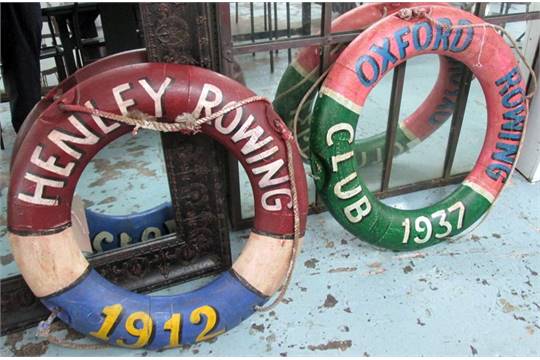
This patent drawing from 1917/1919 might be of interest:
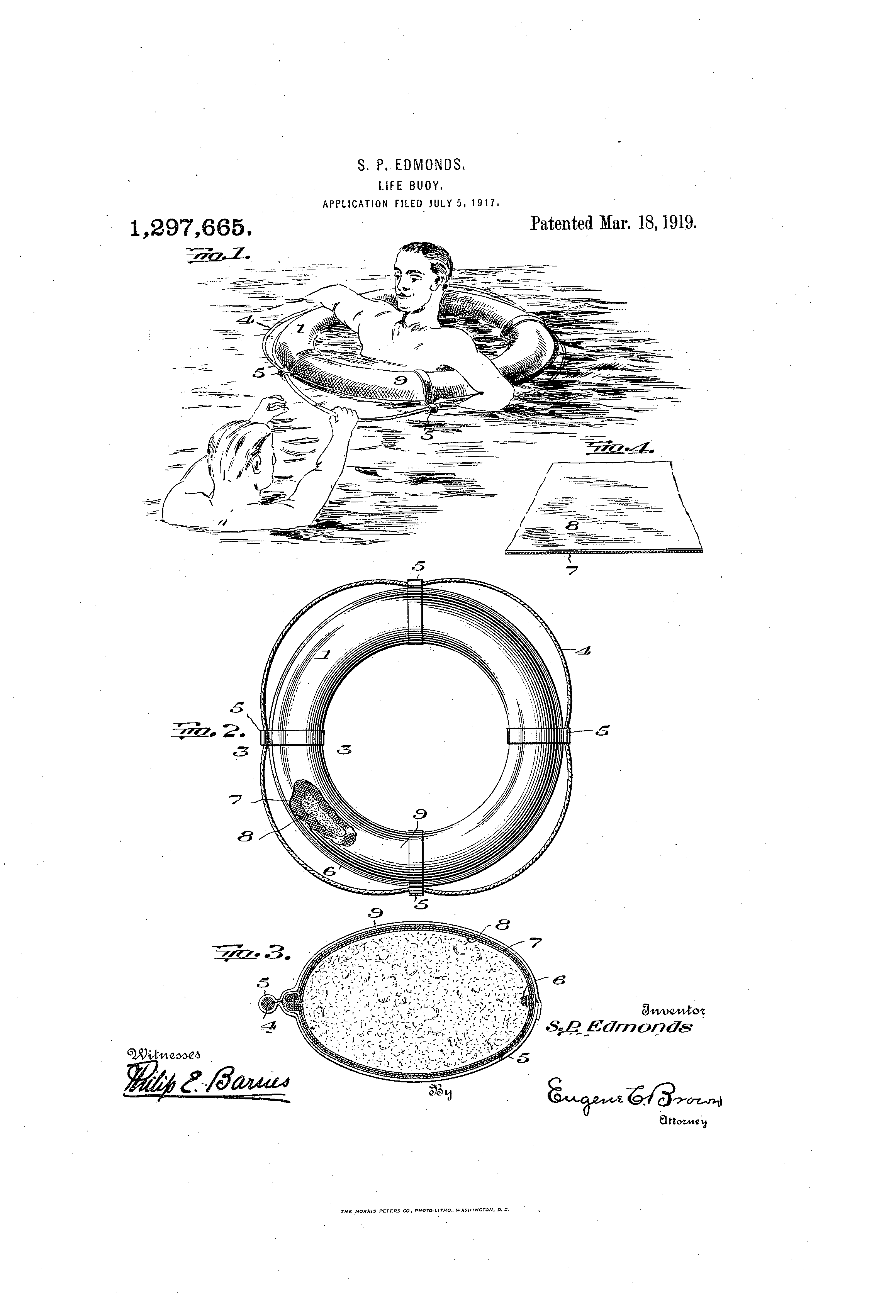
https://www.google.com/patents/US1297665
A more recent patent of tools for making life buoys
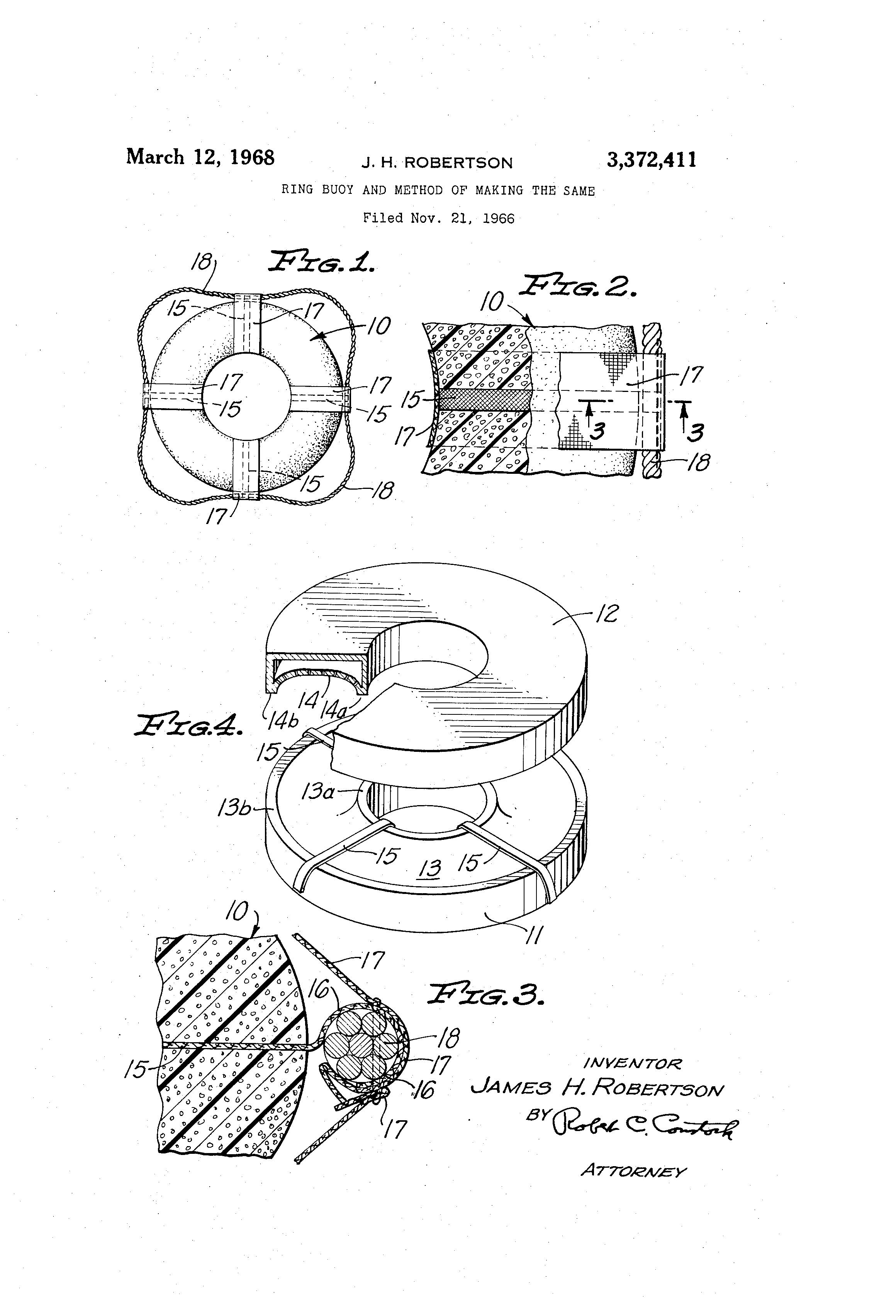
https://www.google.com/patents/US3372411
Thick but still not near circular
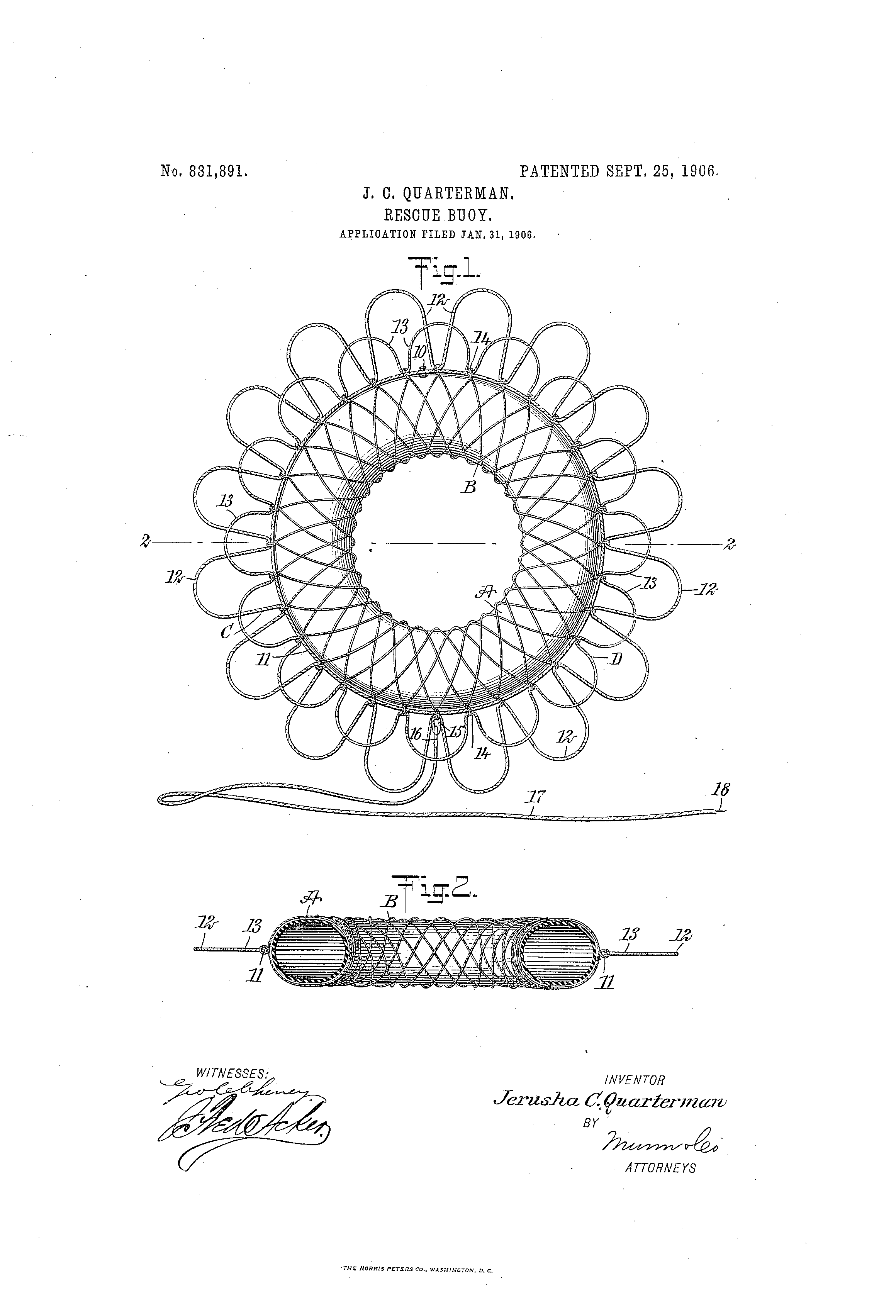
https://www.google.com/patents/US831891 from 1906
The original images/drawings ae available in the patents, quite large actually ...
If one layer of paint doesn't make it thick enough,
paint it two or maybe three times to get the desired thickness

/ Robin
Posted: Wednesday, September 20, 2017 - 02:30 PM UTC
Great research Robin! I tend to agree that in 1:350 scale for a 2 dimensional PE representation will not be noticeably different than a resin version, though I am sure NorthStar do a good job.
Michael
Michael

RobinNilsson

Joined: November 29, 2006
KitMaker: 6,693 posts
Model Shipwrights: 70 posts

Posted: Thursday, September 21, 2017 - 05:31 PM UTC
Quoted Text
Great research Robin! I tend to agree that in 1:350 scale for a 2 dimensional PE representation will not be noticeably different than a resin version, though I am sure NorthStar do a good job.
Michael
What can be noticed is one thing, but the knowledge deep in the roots of your Soul that the darned thing is flat when it should be oval will eventually drive you into the looney bin

Every time you look at those flat buoys you think about it, every time someone looks at your model and compliments it there will be a little sting when you think about the FLATNESS .... the horrible nagging thought: "I should have made them oval" What happens to my status as model shipwright if someone ever finds out?

Tracklink75

Joined: January 16, 2011
KitMaker: 14 posts
Model Shipwrights: 12 posts
Posted: Thursday, September 21, 2017 - 10:08 PM UTC
Very interesting and detailed! But the thickness you now list is way more than 76mm.

RobinNilsson

Joined: November 29, 2006
KitMaker: 6,693 posts
Model Shipwrights: 70 posts

Posted: Friday, September 22, 2017 - 01:38 AM UTC
Quoted Text
Very interesting and detailed! But the thickness you now list is way more than 76mm.
76 mm is 3 inches, about half of 6.3 inches
2/3:ds of 6.3 inches is about 4.2 inches or 106.6 mm
If you look closely at the examples above you might notice that some are more round than oval, same are more flat than oval. The drawing of the mold for making buoys shows a rather flattened cross section, thickness/width approximately 0.5.
For the "flattish" look I suggest scaling down from 3 inches,
for the "rounded" I suggest 10, 10.5 cm.
Still not close to 15 cm though.
The 76 mm was from memory, seeing the TryggHansa lifebuoys that can be found in various places around Sweden (TryggHansa is an insurance company, maybe they sponsor these buoys as some kind of marketing, it gets their name visible all over the place ....)
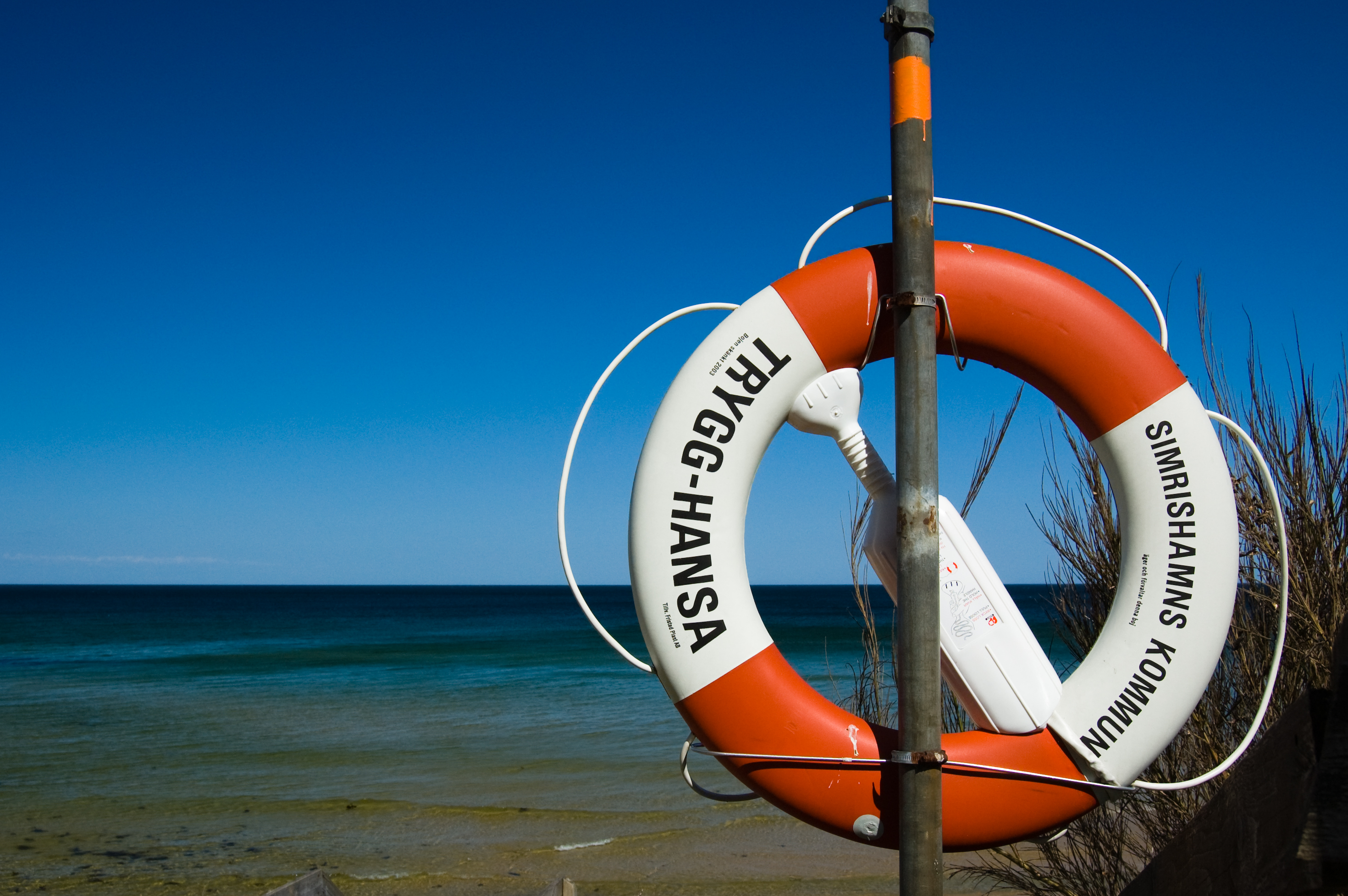
To get the correct value we would need to find the measurements used for the lifebuoys used on the ship that is being modeled.
This book might be of interest, US Coast Guard specs for life buoys. The Code of Federal Regulations of the United States of America, volume nr 46 Shipping, parts 150 to 165:
https://books.google.se/books?id=FSw7AAAAIAAJ&printsec=frontcover&source=gbs_ge_summary_r&cad=0#v=onepage&q&f=false
specifically page 97 where the measurements are given and page 98 where the construction is discussed. On page 99 you will find the requirements on buoyancy for the three sizes.
The measurements are as follows for the three specified
sizes: _____30 ____ 24 _and_ 20 inches.
Outside:___ 30 ____ 24 _____ 20
Inside: ____ 17 ____ 13 _____ 11
Elliptical cross section:
Long dia:__ 6.5 ____ 5.5 ____ 4.5
Short dia:__ 3 ______ 3 _____ 3.5
Buoyancy:_ 32 ____ 16.5 ____ 16.5 lbs
The long diameter of the elliptical cross section is the "width" of the ring when seen as a ring (as an o)
the short diameter is the thickness of the ring when seen from the side (as an I). The long diameter x 2 is the difference between the outer and inner diameter.
The smallest size (the 20-incher) is slightly thicker to compensate a little for the reduced volume.
The text says that the life buoys shall have an elliptical cross section. It also defines the minimum thickness of the layers of the used material when the body of the buoy is constructed of layers of segments.
If only two layers is used the minimum thickness is 1.25 inch (for a total of 2.5 inches + the fabric cover). For a three layer construction the minimum thickness is 3/4 inch which results in 9/4 inches or 2.25 inches. Note that this is minimum thicknesses and the cover and glue also adds some thickness.
A buoy which is 3 inches thick (see also the size/shape specifications above) exceeds the requirements on minimum layer thicknesses and is also possible to grasp by most adult hands. A thickness of 15 cm (slightly less than 6 inches) would be too much for my hands. Even 12 cm is uncomfortably thick.
Thickness 3 or 3.5 inches depending on total size, see US Federal Regulations.
Other rules may apply for ships from other nations but I would like to assume that they are more or less similar. The variation in the size and weight of sailors within a navy or merchant marine is more or less the same as the variation between navies. Maybe the IJN had slightly smaller lifebuoys ....
With most of the body floating in the water the lifebuoy only needs to support the head and shoulders.
Over and out

/ Robin
 |











